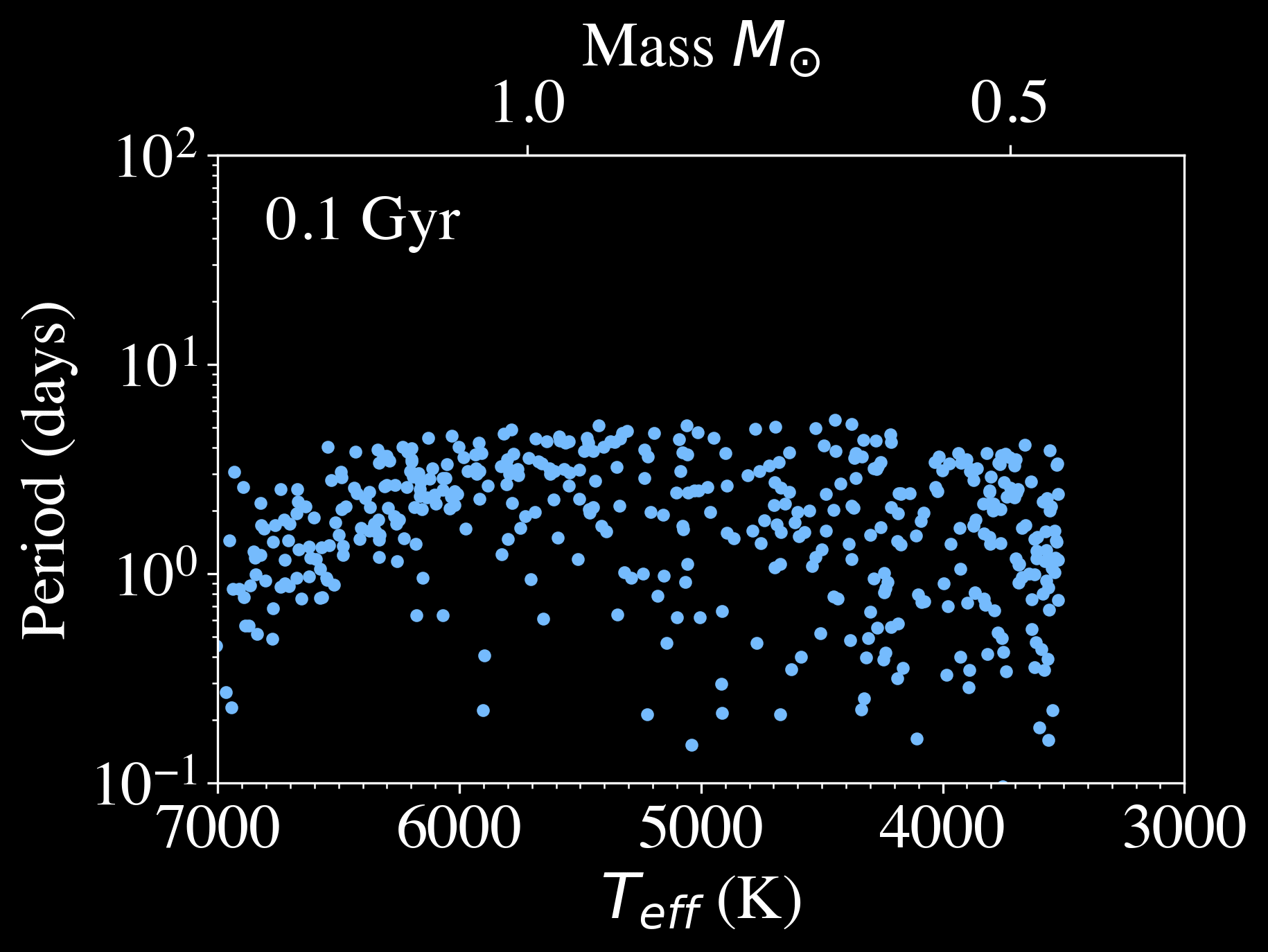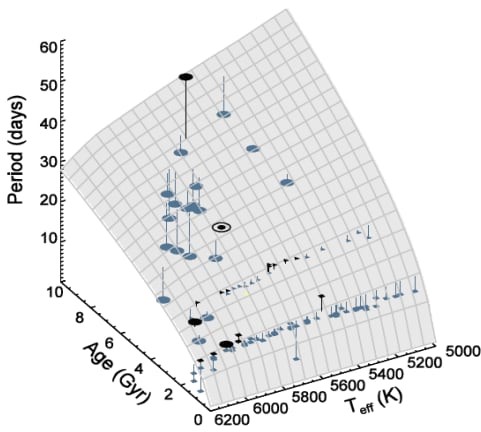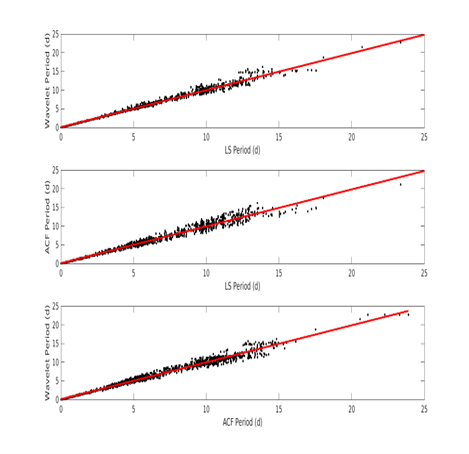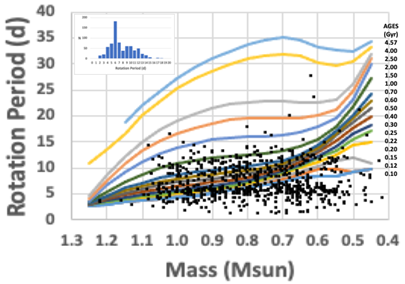Theory
Here, we discuss the governing theories behind gyrochronology and how they are studied in this project. All related references for this page can be found here.
Physical Theories
Gyrochronology
Overview
Gyrochronology is the empirical relation between a star's rotation rate and its age. For stars on the main sequence (MS stars) of spectral type F through M, gyrochronology may be an accurate way to measure stellar ages for stars roughly 0.6 to 1.0 solar masses.
Components of wide non-interacting binaries are coeval, meaning that the ages indicated by rotation rate or other methods are identical within observational and/or model uncertainties. The non-interacting tribute means that there are no direct interactions between the primary star and its companion, which assists with the determination of their periods and ages.
Fig. 1 illustrates how the rotational periods are affected by age for stars of different effective temperatures. Young stars rotate rapidly and rotation periods increase as they age, influenced by the effects of magnetized solar winds causing the stars to lose angular moment and mass. An individual star gradually moves from the bottom to the top of the plot as its rotation rate increases, until it finally evolves off the main sequence.
How is Gyrochronology used?
Ages can be estimated by fitting gyrochrones as shown in the 3D figure below, which was produced by Van Saders et al. (2016). This group called attention to discrepancies between the ages determined by gyrochronology and asteroseismology, which are indicated by the points located above and below the gyrochronology surface in this diagram.
Figures


Astrophysics
Types of Stars
Overview
From Gyrochronology, we see that there our main focus are the ages of Main Sequence (MS) stars. Current gyrochronological theory strictly applies to MS stars due to their modeled rotational slowing as they age along the main sequence. Any stars outside of the main sequence, like the subdwarf, dwarf, giant, and supergiant class, do not fit.
The purpose of using White Dwarf stars as a comparison, along with observing MS+MS and MS+WD binary systems is that we can use accurate age estimations of the WD companion stars to accurately calibrate a gyrochronological model.
Main Sequence (MS) Stars
- Obey the mass-radius relationship
- Appear on the main diagonal of the Hertzsprung-Russel Diagram
- Roughly maintain a constant temperature if they have a constant supply of hydrogen
White Dwarf (WD) Stars
- Extremely hot and emit excess ultraviolet light
- Produce planetary nebula
- Cores are small and dense and are primarily made up of carbon and oxygen
- Cores are supported by degenerate electron pressure
- High density when compared to MS stars
Period Determinations and Gyrochronology Model Comparison



References
Astrophysics
- Andrew Fraknoi, Foothill College, et. al. (2018). Astronomy. OpenStax (download)
- Barnes, Sydney (March 2003). 'On the rotational evolution of Solar- and Late-Type Stars, Its Magnetic Origins, and the Possibility of Stellar Gyrochronology'. The Astrophysical Journal. 586 (1): 464-479 (download)
- Ryden, B., & Peterson, B. M. (2021). Foundations of Astrophysics. Cambridge University Press. (download)
For additional references please see Publications.